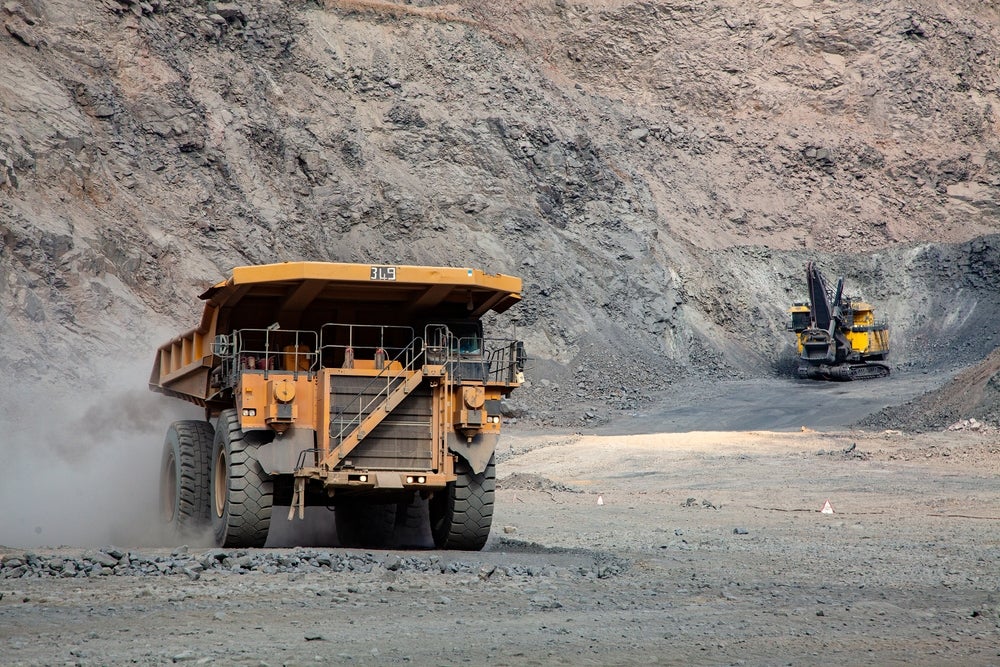A strong focus on infrastructure development has contributed to growth in leasing activity across most of the Balkan states, although the disparity in the economic health of individual countries means expansion is far from uniform. Paul Golden writes.
The Balkans consists of 10 countries: Albania, Bosnia and Herzegovina, Bulgaria, Croatia, Greece, North Macedonia, Montenegro, Romania, Serbia and Slovenia.
Bulgaria
One of the most dynamic lease markets in this region in recent times has been Bulgaria, where net lease receivables in 2018 exceeded €2bn for the first time since the global financial crisis.
Data from the Bulgarian Association for Leasing shows that outstanding net lease receivables under financial and operating lease contracts was €2.064bn (3.7% of GDP) at the end of December 2018, compared to €1.843bn at the end of the previous year, an increase of 12%. New business volumes were up by 20% last year to €1.058bn.
The most dynamic segments of the market were passenger cars, up by just over 20% in 2018, machinery and industrial equipment, which increased by 16.3%, and commercial vehicles, which showed a rise of 10.5%.
In line with other markets, outstanding net lease receivables for computers and business machines are in decline, down 17.9% in 2018, and there was a fall of almost 14% in real estate lease receivables. In terms of new business, machinery and industrial equipment was up 45.6%, and both private and commercial vehicles recorded increases in excess of 22%.
How well do you really know your competitors?
Access the most comprehensive Company Profiles on the market, powered by GlobalData. Save hours of research. Gain competitive edge.

Thank you!
Your download email will arrive shortly
Not ready to buy yet? Download a free sample
We are confident about the unique quality of our Company Profiles. However, we want you to make the most beneficial decision for your business, so we offer a free sample that you can download by submitting the below form
By GlobalDataThese trends have continued into the first three months of this year, with outstanding net lease receivables for passenger cars up by 17%, machinery and industrial equipment up by 15%, and a 14% rise in commercial vehicles contributing to an overall increase of 13%.
Machinery and industrial equipment new business is up 34% for the first quarter of 2019, while there has been a 53% increase in the commercial vehicles segment of the market. Overall new business volumes rose 22% in the first three months of this year.
According to Valentina Marinova, executive assistant at the Bulgarian Association for Leasing, the increase in the leasing market is being driven by growth in GDP and the resulting increase in both corporate and household incomes.
“Also, due to low interest rates in the financial system, leasing companies can offer attractive prices to their clients,” she explains. “Based on the forecasts for GDP growth in 2019 and market data for the first quarter of this year, we have optimistic expectations for market growth over the remainder of 2019.”
Serbia
Sanja Basic, executive director of the business support unit at National Bank of Serbia’s bank supervision department, explains that at the end of 2018, 17 financial leasing companies held licences to perform financial leasing operations in that country, and the total number of employees in the financial leasing sector was 360.
Total balance sheet assets of the sector stood at RSD86.7bn or approximately €730m, up 15.2% from the same period in 2017, while the financial lease receivables of the sector stood at RSD77.8bn, a year-on-year increase of just over 19%.
“It is also important to emphasise that total capital increased,” notes Basic. “As of 31 December 2018, total capital was equal to RSD9.7bn or €81m compared to RSD9.3bn/€78m at the end of 2017, and the profitability indicators of the financial leasing sector also recorded a significant increase compared to the same period of the previous year.”
Return on assets increased from 0.95% to 2.05%, while return on equity amounted to 17.53%, more than double the 7.62% recorded for the same quarter in 2017, indicating not only an increase in profitability but also higher solvency, and suggesting a positive financial leverage effect in the financial leasing sector.
Financing of freight vehicles, minibuses and buses, followed by passenger vehicles, are the strongest market segments due to the marketability of these lease assets and their attractiveness for lessees, adds Basic.
“The process of approving financing of financial leasing is shorter and faster relative to loan financing, which is an important factor that stimulates demand,” she says. “In the context of financial leasing, collateral is not required, so the procedure of granting the approval of financing is most often shorter compared to traditional forms of financing.”
The National Bank of Serbia’s expectations are that the financial leasing sector will continue its growth trend over the next 12 months.
Croatia
Positive sentiment is also evident in Croatia, although growth in the lease market has been on a more modest scale than that enjoyed by some of its Balkan neighbours.
Nataša Vuletić, spokesperson for the Croatian Financial Services Supervisory Agency, observes that Croatian leasing companies are stable and hold adequate levels of capital as a result of continuous supervision by the agency. “Total assets of leasing companies are on the rise: as of 31 March 2019 they amounted to €2.66bn, increasing by €27m compared to the figure for 31 December 2018,” she says.
As of 31 December 2018, leasing operations were carried out by 16 leasing companies. Increased economic activity had a positive impact on the leasing market last year, leading to a rise in business operations. Total assets of leasing companies were up by 7.6% during 2018.
“This was primarily due to the rise in the value of newly concluded lease contracts, which amounted to €1.2bn in 2018, an increase of 20.5% over the previous 12 months,” explains Vuletić. “This increase is mostly related to the increase in the value of newly concluded contracts for passenger cars, which was up by €160bn or 21.1%.”
In 2018, leasing companies’ aggregated net profit amounted to €59.3m compared to €29.7m in 2017. This increase in profitability was partly caused by market growth and partly by the reversal of costs of value adjustments accumulated at the level of the leasing industry.
As of 31 December 2018, capital and reserves of leasing companies were higher than at the end of 2017, at €320m, as compared to €310m as of 31 December 2017. There were 134,784 active lease contracts at the end of last year, up from 120,543 at the end of the previous 12-month period.
“The main challenge for leasing companies is to offer their clients the most affordable financing, considering the competition between companies, which depends on obtaining favourable sources of funding,” explains Vuletić.
“Leasing companies tied to credit and financial institutions have an advantage in this case,” she adds. “Passenger car leasing holds the most significant part of the leasing market in Croatia, especially short-term leasing that reaches its peak during tourist season as a result of increased demand for car rental.”
Taking into account the recovery of the Croatian market, the agency is expecting a further increase in the number and value of lease contracts, as well the leasing companies’ assets.
The Croatian Financial Services Supervisory Agency’s observation on the likelihood of growth in the Croatian leasing market over the next 12 months is that demand for leasing products will be affected, above all, by investment growth and in particular the recovery of the real estate market and the related construction industry, as well as by the aforementioned seasonal demand for passenger cars by companies providing tourism rental services.
Slovenia
Data from the Bank of Slovenia shows that country’s lease sector also experienced moderate growth last year. New leasing business was 1.9% higher than in 2017 at €1.1bn.
New equipment leasing business was up 6.5%, and cars and other commercial and goods vehicles remain the main source of new business, accounting for €957m. New real estate leasing business fell again to €10m, down from €56m in 2017.
Total assets stood at €2.7bn as of 31 December 2018, down 3.5% in year-on-year terms as a result of the winding up of individual reporting entities, while equity on leasing companies’ balance sheets increased by 25% to €597m as a result of continuing good performance and recapitalisations.
Greece
It was, however, a more sombre story in Greece, where despite the documented need for renewal of income-earning assets in the market, businesses are still cautious about investing as long as consumption of goods and services remains low.
Nassia Panoriou, secretary for administrative support at the Association of Greek Leasing Companies, notes that since Greece is primarily a service economy, investments in high-value-producing assets are limited and most assets have to be imported, increasing the life cycle from deal approval to implementation.
“Leasing firms in Greece are all bank-owned, and therefore growth in new leases is correlated with the parent bank’s appetite to fund long-term investments,” she explains. “Last year began with expectations of continuous growth, but the second half of the year saw a drop in new business, and the year closed with marginally negative growth.”
Asked to highlight segments of the market that are particularly strong or weak, Panoriou refers to a steady increase in vehicle financing since 2014, as the segment finally reached its 2010 level of €120m last year. In contract, real estate financing – which exceeded €700m in 2010 – has averaged only €40m during the past four years.
“Expectations of economic growth play a pivotal part in generating demand for the product, and when confidence returns in the economy, we expect growth to follow,” says Panoriou. “Availability of clients’ own funds versus the funding cost for a leasing transaction is also key, with lessors keeping spreads low to generate demand.”
The Association of Greek Leasing Companies’ expectations for growth in the Greek leasing market over the next 12 months are tempered by the fact that 2019 is an election year, and although the first half of the year is expected to improve compared to the same period last year, the second half is not expected to follow suit.
“In addition, new legislation increasing taxes on leasing loans – equating leasing with bank loans – will have an impact on new business to a certain extent,” adds Panoriou. “Therefore, forecasting growth is a difficult exercise for this year.”
Restructuring
Ernest Plej, vice-president of sales for Croatia, Slovenia, Hungary and Austria at Grenke, observes that governments across the Balkan region have been concentrating on reconstructing and upgrading public infrastructure for healthcare and education, in particular with a view to creating a stable environment for foreign and domestic investors to promote economic development.
The main challenge facing lease firms in this region is strong regulation in a number of countries, he says.
“It is important to mention that the Balkan region still manifests a mix of traditional life in the rural areas and a very modern and developed society in the cities.
“Very often, public services and administration are still time-consuming and not really supportive. Due to past developments and the political situation in some of the countries, companies have hesitated to replace old equipment and only made new investments after between five and seven years – in the EU the average period is much shorter.”
The Balkan countries have been recognised as very important for the EU from a strategic and economic perspective, and therefore investments are expected to grow.
According to Plej, Balkan countries are mainly seeking to benefit from natural resources. Tourism in some countries represents almost 20% of their GDP, and others are focused on extracting natural reserves or motivating global companies to open local logistics and production hubs.
“Factors driving demand differ from country to country and the potential of each market depends on the availability of local resources such as employees, participation of the state and access to financial funding,” he says. “This means that these countries are becoming more and more open to investments, internationalisation and globalisation.”
When asked to outline his expectations for growth in the Balkan market over the next 12 months, Plej says that due to the recent development of some of the countries in the region, he expects the Balkans to grow further.
“Everyone is looking for new opportunities, and the governments are creating a more investment-friendly environment for foreign and domestic investors,” he concludes.







